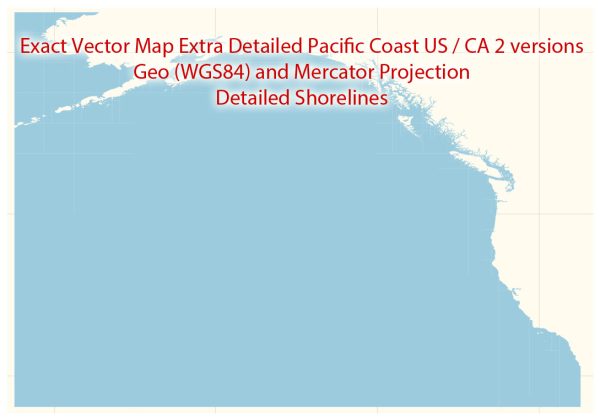The maritime industry and transportation along the Pacific Coast of the United States and Canada play a significant role in the economic activities of the region. This area is home to numerous ports, shipping routes, and a wide range of maritime-related businesses that facilitate the movement of goods, people, and resources. Here’s a description of the maritime industry and transportation in this region:
- Ports: The Pacific Coast features several major ports, including the Port of Los Angeles and the Port of Long Beach in Southern California, which are among the busiest in the United States. Other significant ports include the Port of Seattle and the Port of Vancouver in Canada. These ports serve as gateways for international trade, handling a vast array of goods such as containerized cargo, automobiles, bulk commodities, and more.
- Container Shipping: Container shipping is a crucial component of maritime transportation in the region. Containerships regularly transport goods from Asia, particularly from countries like China, Japan, and South Korea, to the West Coast of North America. The Pacific Coast ports are well-equipped to handle these containerized cargoes, which are then distributed throughout North America by road, rail, or barge.
- Fishing and Seafood Industry: The Pacific Coast is renowned for its rich fisheries. The region’s fishing industry, especially in places like Alaska, Oregon, and Washington, is vital for supplying seafood products both domestically and internationally. Commercial fishing vessels and processing facilities are essential components of the maritime industry in these areas.
- Cruise Industry: The Pacific Coast is a popular destination for cruise lines, with cities like Vancouver, Seattle, and Los Angeles serving as embarkation points for cruises to destinations such as Alaska, the Mexican Riviera, and the Pacific Islands. The cruise industry contributes to tourism and the local economy.
- Ferries and Passenger Transportation: Ferries play a significant role in providing transportation for both passengers and vehicles along the coast. Services like the Washington State Ferries provide essential connections between various islands and coastal communities, making them an integral part of the transportation network.
- Maritime Services: Numerous maritime services operate along the Pacific Coast, including shipbuilding and repair facilities, tug and towboat services, marine logistics companies, and marine insurance providers. These services support the safe and efficient operation of vessels in the region.
- Environmental Concerns: Environmental conservation and sustainability are critical issues in the Pacific Coast maritime industry. Protection of the marine ecosystem, including efforts to reduce pollution, safeguard marine life, and address climate change, is a significant focus for both the United States and Canada in this region.
- International Trade: The Pacific Coast’s maritime infrastructure is a vital link in international trade, particularly with the Asia-Pacific region. As a result, it plays a crucial role in the supply chain of goods moving to and from North America.
In summary, the Pacific Coast of the United States and Canada boasts a vibrant maritime industry and transportation sector. It encompasses major ports, container shipping, fishing, cruise services, and a wide range of maritime-related businesses, all of which contribute significantly to the region’s economic well-being and global trade. The industry continues to evolve and adapt to meet the changing demands of the modern world, focusing on sustainability and environmental stewardship.


 Author: Kirill Shrayber, Ph.D.
Author: Kirill Shrayber, Ph.D.